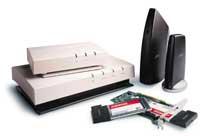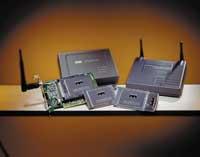Wlan, wireless network

WLAN means that wireless Local Area Network is just a reflection of a trend that is expanding in computing. The cables are not disappearing. They are still very common, but the supply of resources for those who do not need it is growing in the market. For example, the case of peripherals is clear: the user has access to wired keyboards and mice using Bluetooth technology. Lately advertising offers this technology for the two main operating systems, Mac OS X and Windows XP.
All agree
As for networks, it is due to the approval of standard types of WLAN network. The objective of these standards, the Wi-Fi standards, is to ensure that the two computers connect without cables, it seems that compatibility has been achieved, at least in communication. But all this has not been easy to standardize, as some manufacturers did not support the system.
WLAN networks have many advantages, some in sight and the consequences of the absence of cables. Little by little, wireless networks have begun to be used in urban projects, so that the only connection through the ADSL line can provide a complete set of computers that as a wireless connection allows the user to connect from any point in the city. These systems are still experimental, but are increasingly widespread in the world, they are called wireless communities. In Euskal Herria, Bilbao, Vitoria and Pamplona projects of this type have been launched.
The installation necessary to be part of these networks is economical and fast, so the work connected to them can be a great benefit for the connection. Advertising often speaks of these characteristics. However, WLAN networks are having a huge impact on specialized journals. Therefore, in addition to the positive aspects, the negatives are often mentioned: it is not a quick connection and generates security problems.
Security issues

The current maximum speed of such a network is 11 Mbps. Compared to the ADSL line, therefore, it is a very slow connection, so you should look for a way to speed up that speed to get more availability.
On the other hand, safety issues should be mentioned. WLAN networks use an encryption system called WEP (“Wired Equivalent Privacy”), equivalent to the one allegedly offered by cable networks. However, this system at first was not difficult to decode; when some experts discovered the decoding method, a great crisis arose. In addition to encryption systems, authentication methods were incorporated to improve the WEP.
WLAN standards In June 1997, the IEEE approved 802.11, which sets computer standards. This standard specifies the characteristics of wireless communication. The standard established this communication in the 2.4 GHz band. WLAN networks are performed according to 802.11b standards, as they are broadcast at that frequency with a speed of 11 Mbps. |





